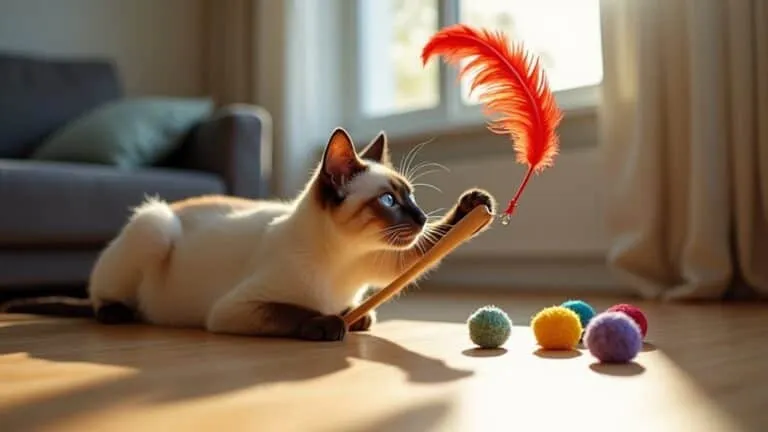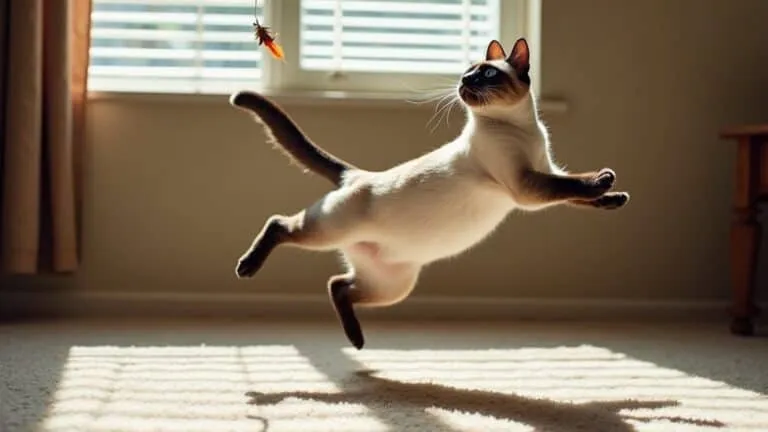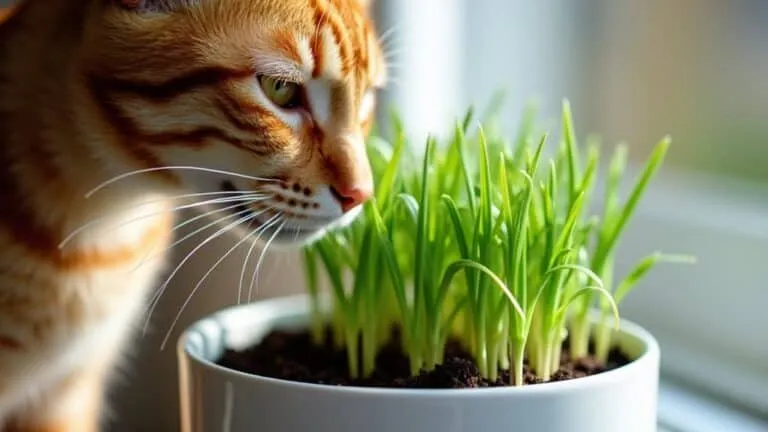The Best Fluffy Pancakes recipe you will fall in love with. Full of tips and tricks to help you make the best pancakes.
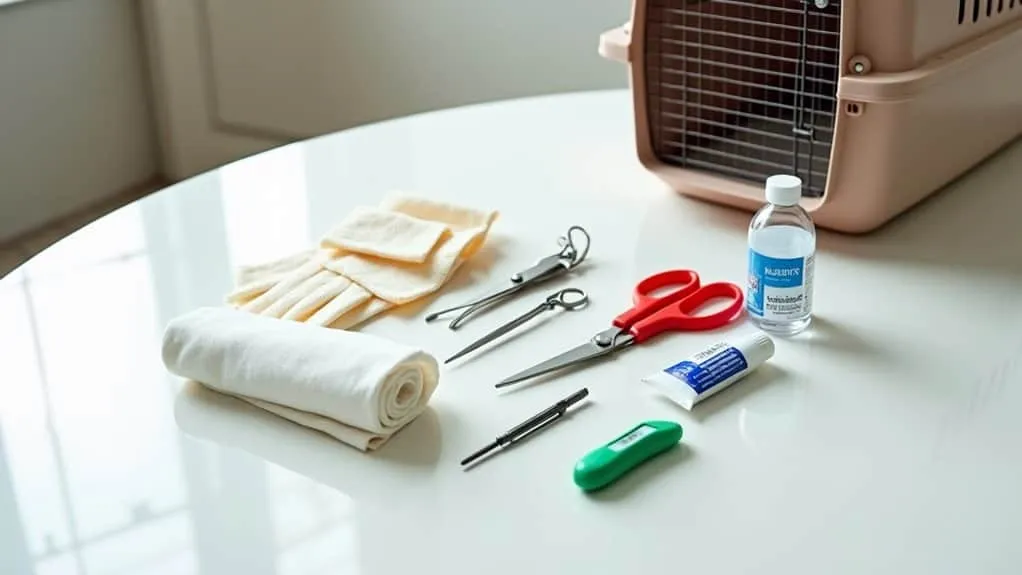
You've probably seen your cat get into all sorts of mischief, from scaling curtains to investigating mysterious corners. While most adventures end with a gentle purr, it's important to be prepared for those unexpected mishaps that can leave both you and your feline friend stressed. A well-stocked first aid kit isn't just another item on your pet care checklist – it's your safety net when your curious cat's explorations don't go as planned. Let's explore what you'll need to create the purr-fect emergency kit.
Why Every Cat Owner Needs a First Aid Kit
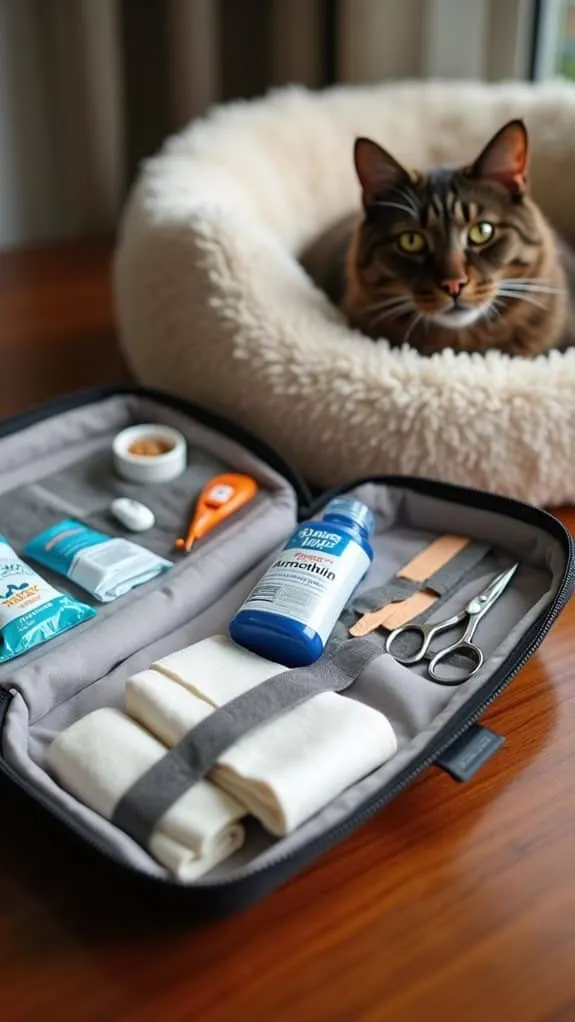
While you might think your indoor cat is safe from harm, emergencies can happen when you least expect them – whether it's a knocked-over plant, an allergic reaction, or an unexpected injury. Understanding cat behavior and having essential first aid supplies ready can make all the difference in a crisis. Having access to antiseptic cleaning supplies can help prevent infections in minor wounds before they become serious, particularly when recognizing infection symptoms early is critical. Regular kit inspections every three months ensure your supplies stay current and effective.
You'll feel more confident and capable when you're prepared for the unexpected. Having a well-stocked first aid kit isn't just about being ready – it's about protecting your furry family member when they need you most.
By investing time in emergency training and keeping the right supplies on hand, you're taking an important step in responsible pet ownership.
Essential Medical Supplies for Your Kit
Since your cat's safety is your top priority, you'll need to stock your first aid kit with the right medical supplies to handle common emergencies.
Start with the basics: sterile gauze pads, rolled bandages, and nonstick bandages for those inevitable scratches and scrapes. It's also essential to recognize that injuries can pose the risk of liver infection, making prompt care crucial.
Don't forget latex gloves to keep things sanitary – your cat may be clean, but accidents aren't!
Keep important emergency phone numbers for local veterinarians and poison control centers readily available in your kit.
Your first aid arsenal should include antiseptic sprays, antibiotic gel, and blood clotting powder for wound care.
Keep a digital thermometer, instant cold packs, and a cozy blanket handy for managing injuries and comfort.
Consider adding non-stinging sprays like Vetericyn or Ceragyn that clean wounds without causing discomfort to your pet.
For quick transport during emergencies, store a sturdy pet carrier and leash nearby.
Remember to include scissors for trimming bandages and fresh water – because even in crisis mode, your furry friend needs to stay hydrated.
Emergency Contact Information and Documentation
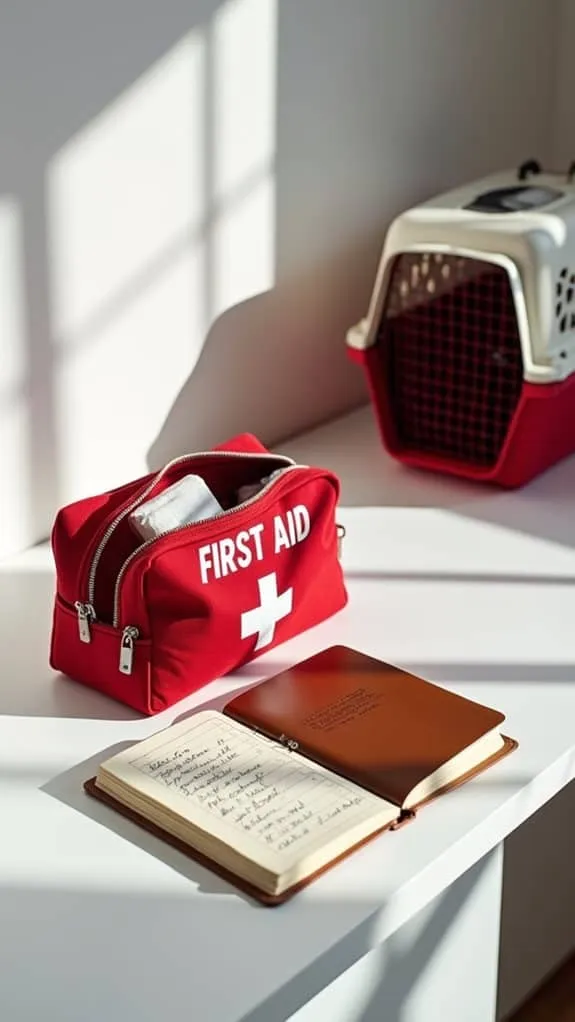
What good is a first aid kit without knowing exactly who to call when your cat needs help?
You'll want to keep a well-organized list of emergency contacts right inside your kit, including your regular vet, closest 24/7 emergency clinic, and poison control hotlines. Additionally, having access to your cat's regular vet visits can help ensure timely care during emergencies.
Having a first aid reference guide nearby can provide quick assistance during stressful situations.
Store these numbers in your phone too, but having a physical backup is essential when every second counts.
Your documentation organization should include your cat's medical history, current medications, and any allergies they have.
For toxicology emergencies, the Animal Poison Control charges a $65 consultation fee to speak with their experts.
Don't forget to add copies of vaccination records and insurance information.
Keep everything in a waterproof sleeve or folder within your kit, and update it regularly.
Wound Care Tools and Materials
A well-stocked wound care section forms the heart of your cat's first aid kit, ready to handle everything from minor scratches to more serious injuries.
Keeping a stockpile of self-adhesive bandages ensures your cat's fur won't be damaged during dressing changes. You'll need sterile gauze pads, saline solution, and pet-safe antiseptics like chlorhexidine for proper wound healing techniques. Adding proper wound management techniques can help minimize infection risk and promote faster healing. HemoSeal Critical Pet Wound Spray can provide quick bleeding control for urgent situations. Don't forget to include cotton balls, Q-tips, and non-stick bandages for gentle cleaning and protection.
Keep an eye out for wound infection signs by having the right tools on hand: tweezers for removing debris, bandage scissors for precise dressing changes, and a digital thermometer to monitor your cat's temperature.
You'll also want to include styptic powder for those pesky bleeding toenails, and an Elizabethan collar to prevent your curious kitty from interfering with the healing process.
Basic Safety Equipment and Protective Gear
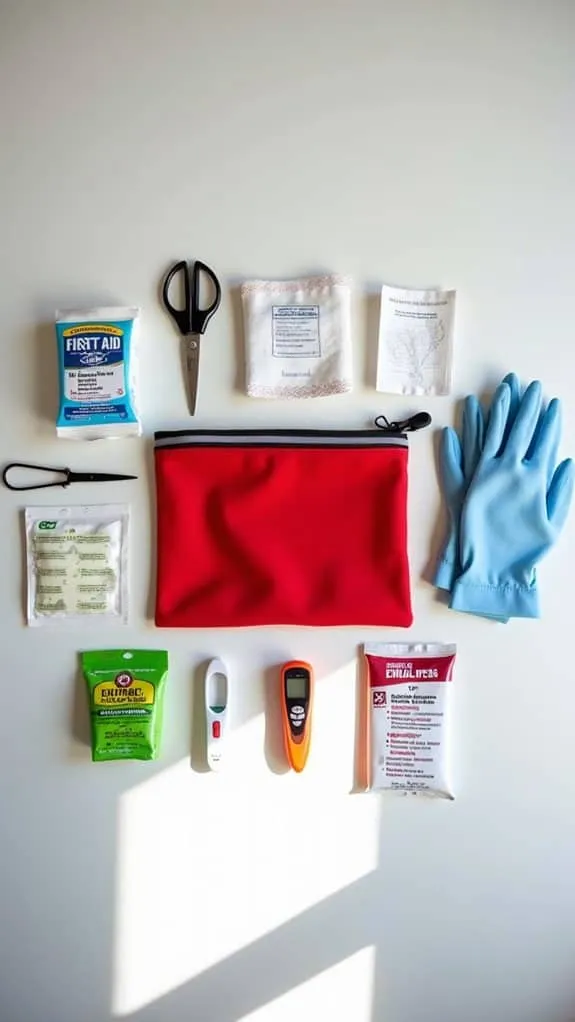
While treating an injured cat requires compassion and skill, you'll also need proper safety gear to protect both you and your feline friend. Start with protective gloves – either latex or nitrile – to shield yourself from bacteria and potential scratches. Having single-use pairs ensures proper hygiene when treating multiple injuries. It is also essential to have appropriate antiseptic products on hand to clean wounds effectively.
Keep safety muzzles or a soft towel handy, as even the sweetest cats might react defensively when they're hurting. Using a blunt-tipped scissors design allows for safe fur trimming around wounds without risking injury to your cat.
Don't forget to stock your kit with a sturdy pet carrier for emergency transport and an E-collar to prevent your cat from disturbing wounds.
A bright flashlight will help you examine injuries clearly, while clean blankets or towels serve multiple purposes – from keeping your cat warm to safely moving them when injured.
Storage and Maintenance Tips
When it comes to keeping your cat's first aid supplies ready for action, you'll want to store the kit where you can grab it quickly without fumbling around in an emergency.
You can make the kit even more effective by organizing supplies based on how often you'll need them, placing frequently used items like gauze and adhesive tape near the top.
Setting a monthly reminder to check expiration dates on medications and supplies will guarantee you're always prepared when your curious kitty needs help.
Choose Right Storage Location
Selecting the perfect storage location for your cat's first aid kit can make all the difference during an emergency.
You'll want to choose a spot that maximizes kit visibility while keeping it safely out of your pet's reach. Consider placing it near areas where your furry friend spends most of their time, but up high where curious paws can't get to it.
Keep the kit in a consistent location, ideally alongside your household first aid supplies, and guarantee everyone in your home knows where to find it.
It's also smart to store emergency contact numbers right with the kit – those midnight pet emergencies won't wait for you to hunt down your vet's phone number!
Remember to keep the kit in a waterproof container that's clearly labeled, so you can grab it quickly when needed. Additionally, recognizing your cat's trust and affection behaviors can guide you in providing a calming environment during stressful moments.
Organize By Usage Frequency
Smart organization of your cat's first aid supplies can make a huge difference in those essential moments when every second counts.
When preparing for cat emergency situations, arrange your supplies based on how often you'll need them. Keep frequently used items like gauze pads, bandages, and antiseptic wipes within easy reach at the front of your kit.
Place occasional-use items like hydrogen peroxide and emergency blankets in the middle section, while storing rarely needed supplies such as muzzles and styptic powder toward the back. This thoughtful arrangement guarantees you're not fumbling through less-needed items during first aid preparedness moments.
Don't forget to group prescription medications and specialized tools separately, making them instantly identifiable when needed. It's like giving your kit a practical roadmap – you'll know exactly where everything is when time matters most!
Check Expiration Dates Monthly
A well-organized first aid kit needs regular maintenance to stay reliable in emergencies. Setting monthly expiration reminders on your phone will help you stay on top of checking those important supplies for your feline friend.
During your monthly inspections, you'll want to pay special attention to medications, antibiotic ointments, and saline solutions that can lose their effectiveness over time.
Don't forget to examine your bandages and
When to Use Your First Aid Kit vs. Seeking Veterinary Care
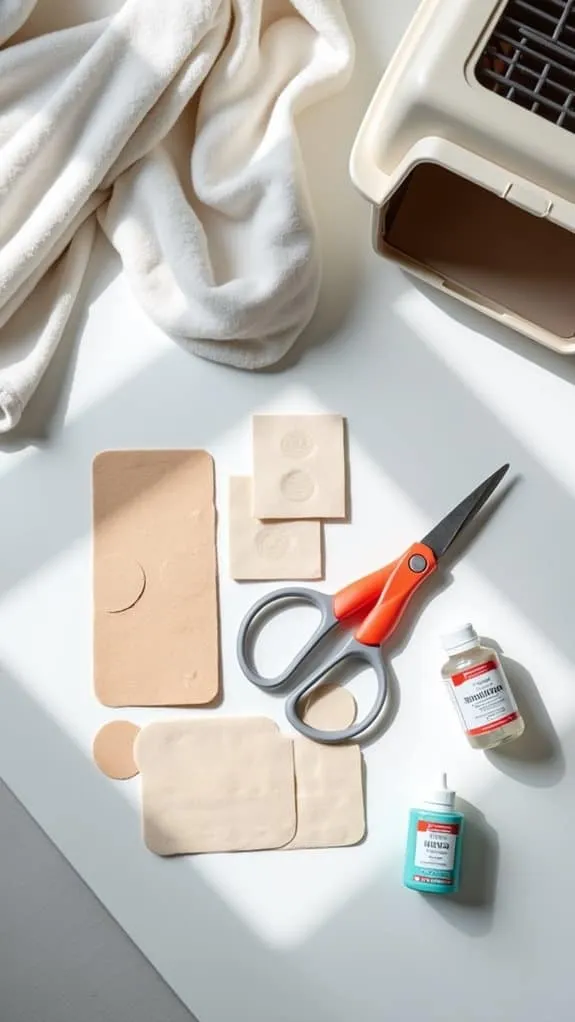
Making quick decisions about your cat's care can feel overwhelming, especially when you're worried about your furry friend's well-being. Knowing when to handle first aid scenarios at home versus seeking immediate veterinary response can make all the difference in your cat's recovery.
You can manage minor issues like small cuts or splinters using your first aid kit, but don't hesitate to call the vet if you're unsure.
However, certain situations demand immediate professional care – if your cat's having breathing difficulties, has suffered chest or abdominal wounds, or lost consciousness, head straight to the emergency vet.
When dealing with eye injuries, it's better to be safe than sorry – while you can flush minor irritations with saline, any sharp object injuries need immediate professional attention. Additionally, it's important to consider underlying medical issues that could complicate your cat's condition.
Trust your instincts; if something feels seriously wrong, it probably is.
Final Thoughts
Being prepared isn't just a cat and mouse game – it's about keeping your feline friend safe and healthy. With your well-stocked first aid kit, you're ready to handle minor emergencies while knowing when to seek professional care. Remember to check your supplies regularly, keep emergency contacts updated, and store your kit in an easily accessible location. You'll have peace of mind knowing you're equipped to care for your beloved cat when accidents happen.

